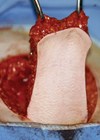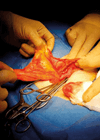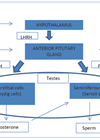Features
Genital gender affirmation surgery for transgender men
Genital gender affirmation surgery (GAS) is the final step in the transition journey for transgender men. Genital GAS involves a combination of procedures to surgically align physical characteristics with one’s gender identity. These needs change between each individual depending on...
Priapism
Priapism is defined as an abnormally persistent erection lasting greater than four hours, not associated with sexual desire [1]. Although relatively uncommon with an incidence of 1.5 per 100,000 [2], priapism has a risk of complications which can have a...
The Re-humanising Revolution: Breaking the conspiracy of silence
Over the last few years, the mental and emotional wellbeing of those who work in medicine has come under scrutiny. The author introduces a new resource. Working in healthcare has always been stressful but never more so than today. In...
Onco-fertility: a review
Subfertility or infertility is a major problem affecting men diagnosed with testicular cancer (TC) either due to the disease itself [1], or as a result of management [2]. TC is the most prevalent cancer affecting men of reproductive age [3]....
Artificial penile pearls: what every Urologist should know!
Penile implants are inert objects placed beneath the skin of the penis through an incision. These are variously referred to as Yakuza beads, pearls, ball bearings, speed bumps, penile marbles, inserts, etc. The term ‘penile implant’ described here should not...
An update on erectile dysfunction guidelines and treatment options
Erectile dysfunction is defined as the persistent inability to attain and / or maintain an erection sufficient for sexual performance. Not only does this have a psychosocial impact, it also affects the quality of life of both the patients and...
Getting it Right First Time in urology: the implementation phase
The Getting it Right First Time (GIRFT) programme is the largest and most comprehensive initiative to improve the quality and efficiency of individual clinical services that the NHS has ever instigated. The programme falls under the auspices of NHS Improvement...
Practical surgical management of chronic testicular pain
Chronic testicular pain (CTP) is defined as constant or intermittent, unilateral or bilateral testicular pain of more than three months’ duration, which significantly interferes with the daily activities of the patient prompting medical advice [1-4]. This condition is commonly seen...
Training to be a urologist: how risky is it?
The NHS and urology face challenging times in trying to provide quality patient care efficiently and economically. Urology trainees are experiencing conflicting pressures with a new contract, a challenging on-call system and changing training requirements in an overstretched, centralised service...
Male infertility
Definitions Infertility is the inability of a sexually active, non-contracepting couple to achieve spontaneous pregnancy in one year [1]. About 15% of couples do not achieve pregnancy within one year and seek medical treatment for infertility. Semen parameters are standardised...
Simulation-based training of procedural skills: application and integration of educational theories
Educational theories: how familiar are we with these theories and their application in our training? As a Simulation Fellow I have been involved in teaching specific procedural skills and running full immersion simulation sessions. This experience has exposed me to...
Peyronie’s disease: a review and update
Peyronie’s disease (PD) describes an acquired disease of the penis, which is characterised by a number of signs and symptoms. These include penile pain, curvature, palpable plaques, wasting or narrowing of the penile shaft, a hinge deformity and potentially catastrophic...













